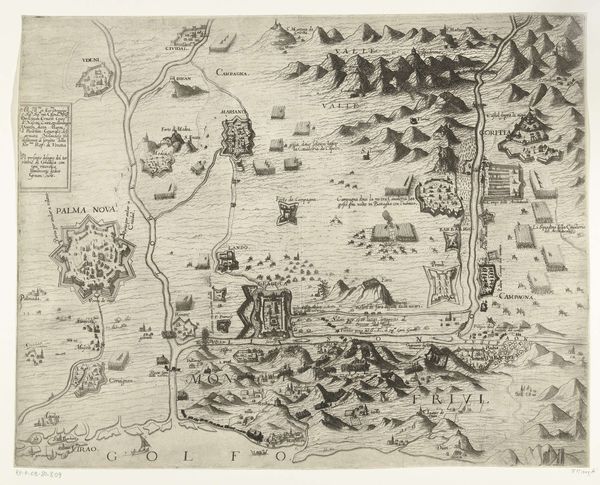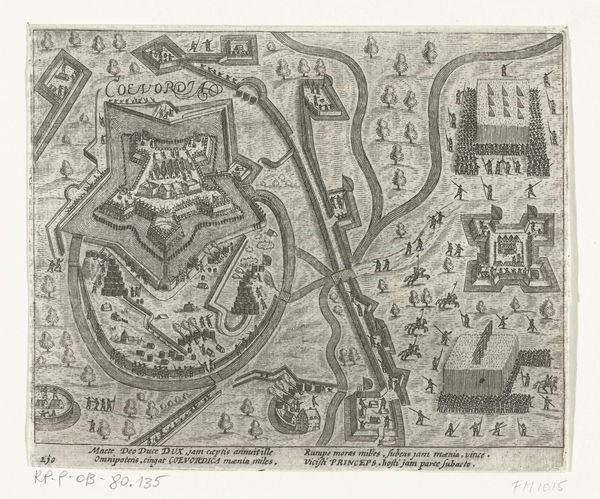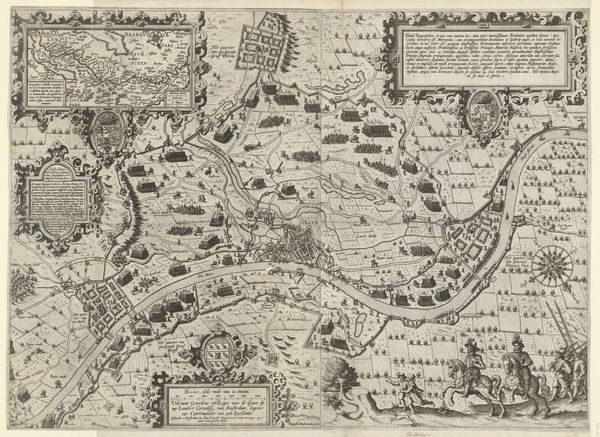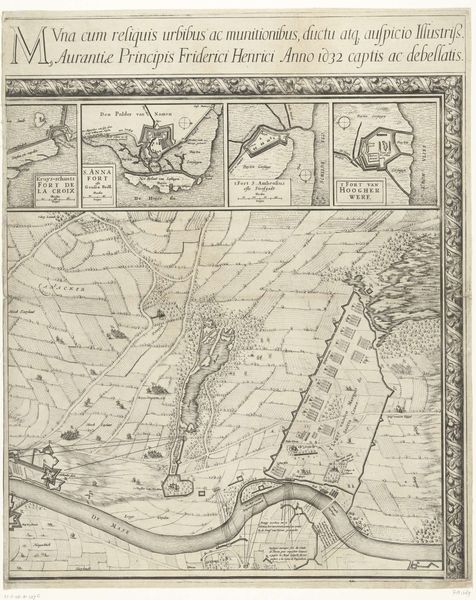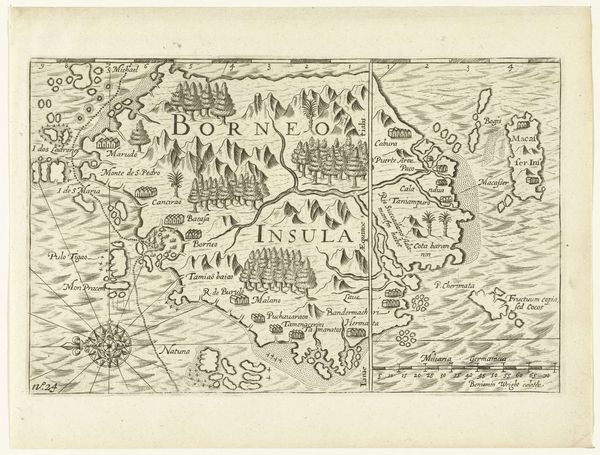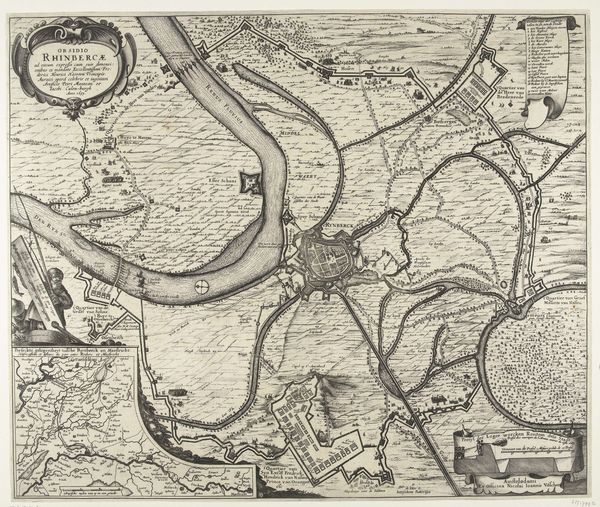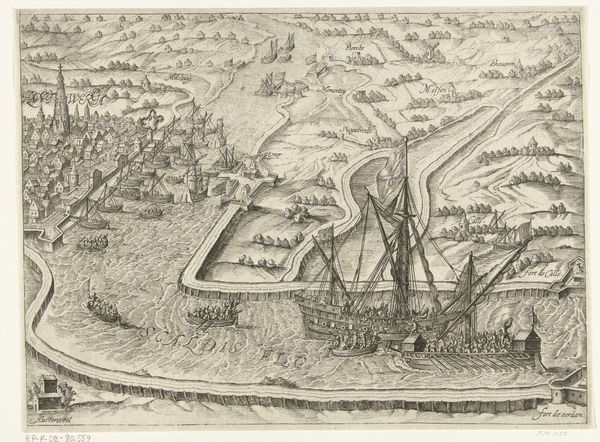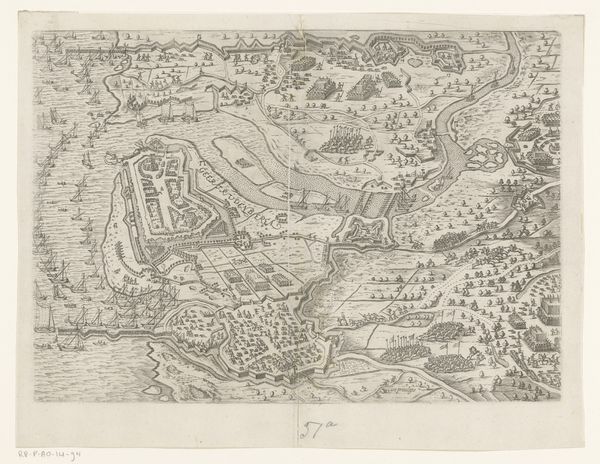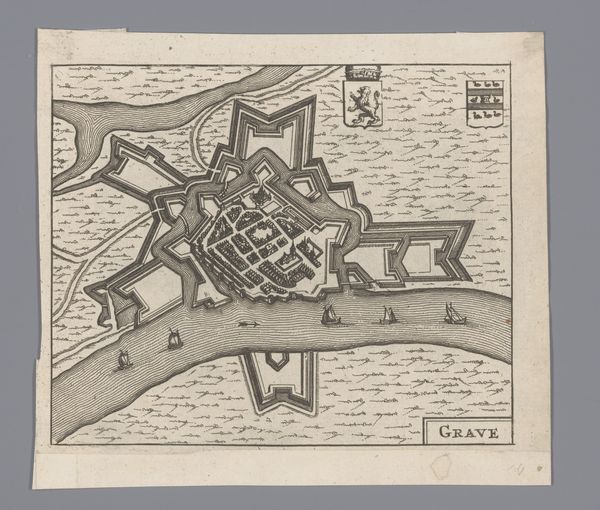
print, engraving
#
baroque
# print
#
old engraving style
#
landscape
#
cityscape
#
history-painting
#
engraving
Dimensions: height 236 mm, width 331 mm
Copyright: Rijks Museum: Open Domain
Curator: This detailed engraving from 1641, titled "Kaart van het beleg van Huis te Gennep," offers a bird's-eye view of the siege of Gennep. What strikes you immediately about this print? Editor: The sheer amount of labor that went into this— the tiny, meticulous lines painstakingly etched, each tent and fortification represented. It’s not just an image; it’s a record of collective effort, both in its making and what it depicts. Curator: Indeed. The anonymous artist captures not just the physical landscape but the socio-political dynamics of the time. Notice how Gennep, a strategic stronghold, is positioned. Its centrality speaks volumes about the power struggles during the period of the Dutch Republic. Editor: Absolutely, but what materials were used, and where did they originate? Were they locally sourced, or were they signs of colonial expansion? Thinking about that link between resources, conflict, and representation seems essential. Curator: A valid question! While specific material origins are undocumented, it’s important to remember how cartography itself was deeply implicated in colonial projects, legitimizing claims to territory. It emphasizes whose perspective is privileged and whose is omitted. Editor: And the printing process itself… each impression made would replicate that power, further disseminating this specific visual understanding. We're not just seeing a siege; we're seeing its industrialized retelling. Curator: Precisely. This work becomes a material testament to power—a visualization and propagation of military and political will. The Baroque style amplifies this, imbuing the scene with a dramatic, almost propagandistic air. Editor: Right, that perspective. So often art historical narratives around works like these focus on the artistry itself, but it can eclipse looking at the literal dirt beneath the boots. Who built those walls? Who fired those cannons? What did they get paid, or *not* get paid? Curator: It urges us to reflect critically on the narratives embedded within this seemingly objective map. Considering not just who laid siege to Gennep, but what siege warfare represented—entrenched social inequalities being brutally enforced. Editor: Indeed. This engraving is more than just an image of a siege; it’s an object born from that historical moment. Examining it reminds us how intertwined art, labor, and socio-political structures remain today. Curator: Analyzing its social, material, and political facets provides insights not only into seventeenth-century conflicts but into ongoing themes of power, representation, and justice.
Comments
No comments
Be the first to comment and join the conversation on the ultimate creative platform.

